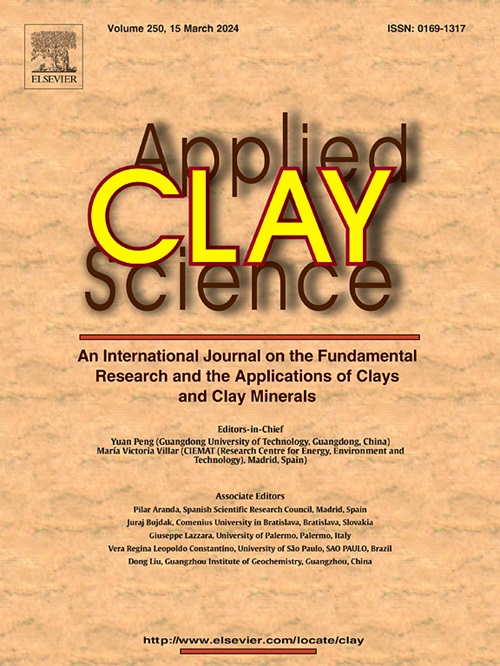Holographic characterization of typical silicate minerals by terahertz time-domain spectroscopy
IF 5.3
2区 地球科学
Q2 CHEMISTRY, PHYSICAL
引用次数: 0
Abstract
The Deep-Time Digital Earth Plan aims to develop a comprehensive digital representation of Earth's global systems, a goal that requires extensive mineralogical data and substantial scientific information. While traditional mineralogical characterization provides critical insights into the mantle's water cycle and geological evolution, existing geological methodologies face challenges due to electromagnetic band gaps and limitations in phase utilization. Leveraging the unique properties of water-sensitive, coherent, and fingerprint spectra, this study introduced Terahertz (THz) spectroscopy as a new method for validating holographic “THz colors” under pyrolytic and optical conditions. This approach enabled the simultaneous analysis of amplitude, phase, and spectral distribution for typical silicate minerals, facilitating the development of a comprehensive library of THz spectra for mineral materials. This library was constructed with support from conventional X-ray and infrared tools. Our research identified several minerals with THz characteristic absorption peaks, including pyrophyllite at 1.10 THz and chamosite at 1.15 THz. These findings challenged existing perceptions in the THz community regarding raw mineral. The experimental results demonstrated the potential of THz technology as a transformative tool for mineral detection and geological analysis, integrating optics and geophysics. Moreover, this advancement provides significant insights and enhances the development of digital Earth models and study of mineral morphology on Earth's surface.

典型硅酸盐矿物的太赫兹时域光谱全息表征
深时数字地球计划旨在开发地球全球系统的综合数字表示,这一目标需要广泛的矿物学数据和大量的科学信息。虽然传统的矿物学表征提供了对地幔水循环和地质演化的重要见解,但由于电磁带隙和相位利用的限制,现有的地质方法面临挑战。利用水敏、相干和指纹光谱的独特特性,本研究引入了太赫兹(THz)光谱作为在热解和光学条件下验证全息“太赫兹颜色”的新方法。该方法能够同时分析典型硅酸盐矿物的振幅、相位和光谱分布,促进了矿物材料太赫兹光谱综合库的开发。该库是在传统x射线和红外工具的支持下构建的。我们的研究确定了几种具有太赫兹特征吸收峰的矿物,包括1.10太赫兹的叶蜡石和1.15太赫兹的铁钼矿。这些发现挑战了太赫兹社区对原料矿物的现有看法。实验结果证明了太赫兹技术作为矿物探测和地质分析的变革性工具的潜力,将光学和地球物理相结合。此外,这一进展提供了重要的见解,并促进了数字地球模型和地球表面矿物形态研究的发展。
本文章由计算机程序翻译,如有差异,请以英文原文为准。
求助全文
约1分钟内获得全文
求助全文
来源期刊

Applied Clay Science
地学-矿物学
CiteScore
10.30
自引率
10.70%
发文量
289
审稿时长
39 days
期刊介绍:
Applied Clay Science aims to be an international journal attracting high quality scientific papers on clays and clay minerals, including research papers, reviews, and technical notes. The journal covers typical subjects of Fundamental and Applied Clay Science such as:
• Synthesis and purification
• Structural, crystallographic and mineralogical properties of clays and clay minerals
• Thermal properties of clays and clay minerals
• Physico-chemical properties including i) surface and interface properties; ii) thermodynamic properties; iii) mechanical properties
• Interaction with water, with polar and apolar molecules
• Colloidal properties and rheology
• Adsorption, Intercalation, Ionic exchange
• Genesis and deposits of clay minerals
• Geology and geochemistry of clays
• Modification of clays and clay minerals properties by thermal and physical treatments
• Modification by chemical treatments with organic and inorganic molecules(organoclays, pillared clays)
• Modification by biological microorganisms. etc...
 求助内容:
求助内容: 应助结果提醒方式:
应助结果提醒方式:


